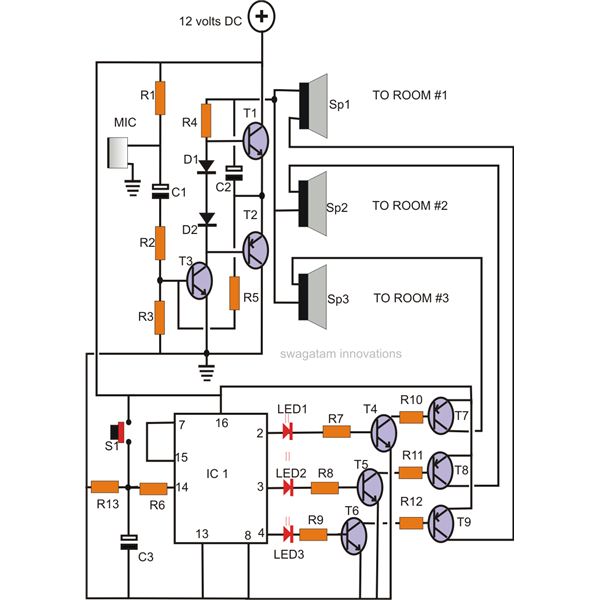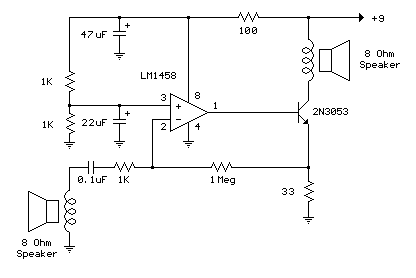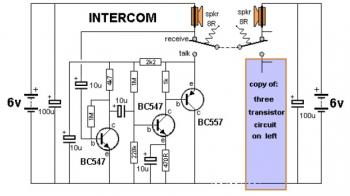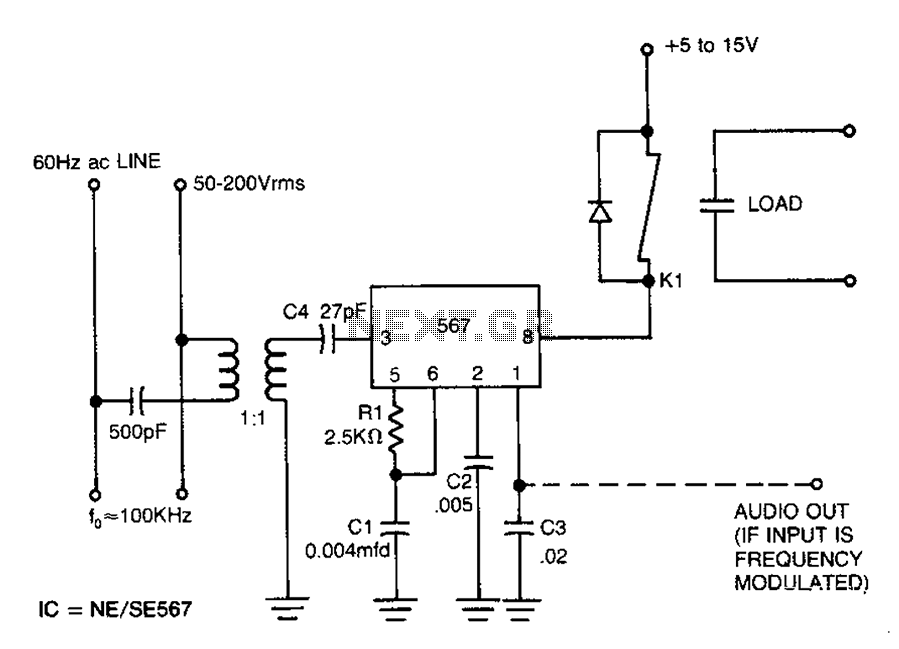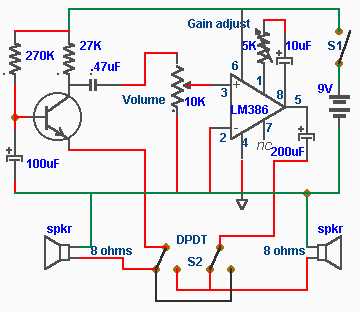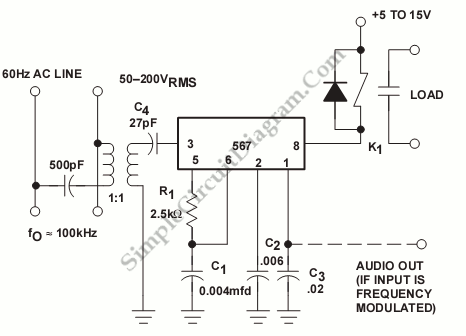
intercom
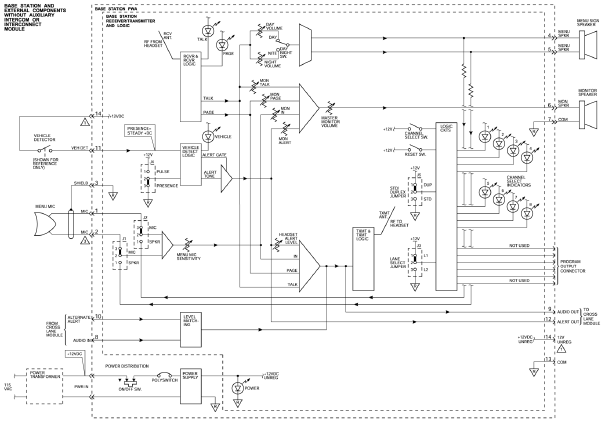
This card incorporates a constant current source to activate the phone. The LM339 is utilized to detect both the presence and absence of a hand. Duplicate circuits are implemented due to the eight-phone interface. When a hand is detected near the phone, the output of the LM339 is monitored by the microcontroller, which confirms the phone's presence in the area. Additionally, the microcontroller employs the MT8816 analog channel, while the LM555 is employed to generate a dial tone.
The circuit design features a constant current source that provides a stable power supply to the phone circuitry, ensuring reliable operation. The LM339 comparator is configured to monitor the input from a proximity sensor or similar device that detects the presence of a hand. This device typically outputs a high or low signal based on the proximity of an object. The LM339's output is connected to a microcontroller, which processes the signal to determine whether the phone is in use or idle.
The microcontroller, likely programmed with specific logic, interprets the LM339 output to manage the phone's interface. With eight phone lines available, the design may feature multiple LM339 circuits, each corresponding to an individual phone line, allowing for simultaneous monitoring and control.
The MT8816 analog channel serves as a key component for signal processing, facilitating communication between the phone and the microcontroller. This integration allows for efficient handling of audio signals, ensuring clear and reliable voice transmission.
The LM555 timer is configured in astable mode to generate a continuous dial tone, which is essential for indicating that the phone is ready for use. This tone is generated by the LM555's output, which can be directly connected to the phone's audio output circuitry, providing the necessary signaling to the user.
Overall, the circuit integrates various components to create an effective phone activation and monitoring system, ensuring that the user experience is both intuitive and responsive. The design's modular approach allows for scalability and flexibility, accommodating multiple phone lines while maintaining clarity in operation.In this card there is a constant current source is used to activate the phone. The LM339 is used to detect out of hand and the hand of the condition. There are circuits repeat the same because we have the phone interface 8. When the phone on hand in the output of the LM339 change is detected by the microcontroller that the phone is in the area, th en make the microcontroller is using the MT8816 analog channel. the LM555 is used to generate a dial tone. 🔗 External reference
The circuit design features a constant current source that provides a stable power supply to the phone circuitry, ensuring reliable operation. The LM339 comparator is configured to monitor the input from a proximity sensor or similar device that detects the presence of a hand. This device typically outputs a high or low signal based on the proximity of an object. The LM339's output is connected to a microcontroller, which processes the signal to determine whether the phone is in use or idle.
The microcontroller, likely programmed with specific logic, interprets the LM339 output to manage the phone's interface. With eight phone lines available, the design may feature multiple LM339 circuits, each corresponding to an individual phone line, allowing for simultaneous monitoring and control.
The MT8816 analog channel serves as a key component for signal processing, facilitating communication between the phone and the microcontroller. This integration allows for efficient handling of audio signals, ensuring clear and reliable voice transmission.
The LM555 timer is configured in astable mode to generate a continuous dial tone, which is essential for indicating that the phone is ready for use. This tone is generated by the LM555's output, which can be directly connected to the phone's audio output circuitry, providing the necessary signaling to the user.
Overall, the circuit integrates various components to create an effective phone activation and monitoring system, ensuring that the user experience is both intuitive and responsive. The design's modular approach allows for scalability and flexibility, accommodating multiple phone lines while maintaining clarity in operation.In this card there is a constant current source is used to activate the phone. The LM339 is used to detect out of hand and the hand of the condition. There are circuits repeat the same because we have the phone interface 8. When the phone on hand in the output of the LM339 change is detected by the microcontroller that the phone is in the area, th en make the microcontroller is using the MT8816 analog channel. the LM555 is used to generate a dial tone. 🔗 External reference
